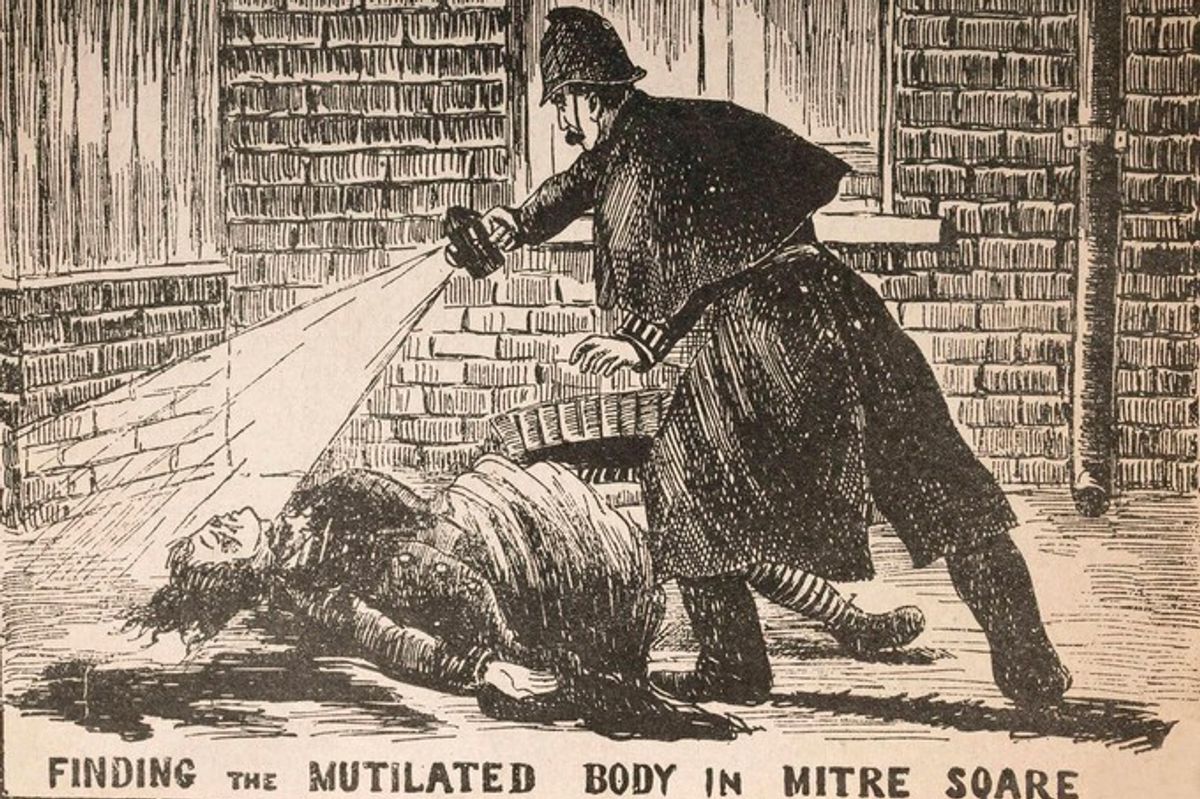News
Harriet Brewis
Jul 16, 2023
The identity of Jack the Ripper
content.jwplatform.com
He’s arguably the most notorious serial killer to have ever darkened London’s streets, but Jack the Ripper’s identity has remained a mystery for more than a century.
However, the descendent of a policeman who worked on the original Ripper investigation believes she’s unearthed proof of who he really was.
Sarah Bax Horton used medical records and witness descriptions to put together the pieces of the 135-year-old puzzle.
And despite numerous conspiracy theories suggesting he was a member of the royal family, Alice in Wonderland author Lewis Carrol, or a woman all along, Bax Hoxton’s trail definitively leads to one man.
Sign up for our free Indy100 weekly newsletter
“For the first time in history, Jack the Ripper can be identified as Hyam Hyams using distinctive physical characteristics,” she told The Telegraph.
Hyams, a cigar-maker, lived at the centre of the infamous murders, which occurred in or around Whitechapel, east London, in 1888.
He was an epileptic and alcoholic who repeatedly assaulted his wife, and who, thanks to his line of work, knew how to use a knife.
He was constantly in and out of mental asylums and was eventually arrested after he attacked his wife and mother with “a chopper”, the paper reports.

Bax Horton grew convinced that Hyams was her man when she went through witness descriptions of a man spotted with female victims shortly before they were stabbed to death.
The suspect was understood to be a man in his mid-thirties with a stiff arm and an irregular gait with bent knees.
Upon uncovering Hyams’ medical notes, Bax Horton noticed that he had an injury that left him unable to “bend or extend” his left arm and that he had an irregular gait and was unable to straighten his knees. He was also 35 at the time of the brutal killings.
Six of the victims, who were destitute or believed to be sex workers, were all murdered in frenzied attacks in the latter half of 1888.
This time frame coincided with a period of sudden mental and physical decline suffered by Hyams, which began after he broke his left arm in February of that year and led to his permanent committal to a mental asylum in September 1889.
“That escalation path matched the increasing violence of the murders,” Bax Horton explained. “He was particularly violent after his severe epileptic fits, which explains the periodicity of the murders.”
She believes that Hyams’s physical and mental decline – exacerbated by his alcoholism – was the impetus for his deadly spree.
The murders stopped at the end of 1888, around the time Hyams was picked up by the police as “a wandering lunatic”, The Telegraph notes.
And, in 1889, he was incarcerated in north London’s Colney Hatch Lunatic Asylum until his death in 1913.
Meanwhile, Jack the Ripper never struck again.

Bax Horton also pointed out that details in Hyams’s medical files matched other physical descriptions of the suspect.
“[Witnesses] saw a man of medium height and build, between 5ft 5in. and 5ft 8in. Tall, stout and broad-shouldered. Hyams was 5 foot 7 and a half inches, and weighed 10 stone 7 lbs… His photograph demonstrates that he was noticeably broad-shouldered,” the amateur sleuth said.
The troubled east Londoner had been on a “long list” of around 100 culprits but was eventually discounted because he kept getting misidentified, she told the paper.
“When I was trying to identify the correct Hyam Hyams, I found about five. It took quite a lot of work to identify his correct biographical data,” she said.
“Hyam Hyams has never before been fully explored as a Ripper suspect. To protect the confidentiality of living individuals, two of the Colney Hatch Asylum files on patients, including Hyams, were closed to public view until 2013 and 2015.”

The reason Bax Horton, a retired civil servant, set about trying to solve the world-famous mystery is all thanks to her family tree.
In 2017, while researching her ancestry, she discovered that her great-great-grandfather, Harry Garrett, had been a Metropolitan Police sergeant at the headquarters of the Ripper investigation.
Soon, she found herself reading extensively about the case and decided to carry on her ancestor’s work.
She will now present her findings in a forthcoming book titled, ‘One-Armed Jack: Uncovering the Real Jack the Ripper’, which will be released next month.
Have your say in our news democracy. Click the upvote icon at the top of the page to help raise this article through the indy100 rankings.
Top 100
The Conversation (0)














